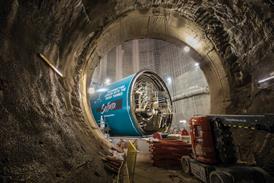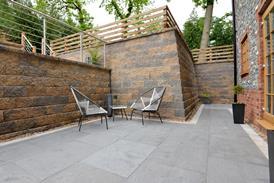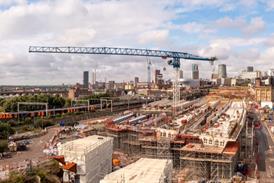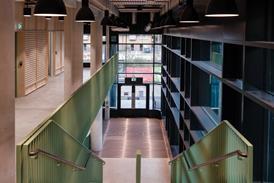High-quality modular schemes such as housing association The Peabody Trust's Murray Grove scheme in London and Sunley's e.house trial at Port Regent in Eastbourne stoked interest in modular and pod build. And even homebuilders sceptical about prefabrication two years ago have appointed innovation tsars to explore prefabrication.
The modular market is now at a crossroads. Those that have built prototypes are deciding how best to proceed. For example, Wimpey Homes and housing association The Guinness Trust are monitoring modular homes being built by manufacturer Britspace. While Sunley is in pre-contract talks with manufacturer Elliott about building 16 modular homes.
"Many prototypes have been very well engineered but have been expensive," says Darren Richards, operations director at prefabrication consultant MTech Services. "The task now is to find a balance between engineering quality and cost."
Britspace sales and marketing director Graham Townend says that for modular to work the construction site needs to become an extension of the factory. "Developers need to prepare the site first so that modules are delivered to a clean site. The supply of materials must also be established before production starts. If a delivery is late it holds up the whole process."
The BRE is analysing the prefabrication process using the Calibre monitoring tool. It has found that factory project managers have little experience of working on site and site managers have still to learn about factory build. The BRE is exploring ways of dovetailing the two roles and aims to introduce a Calibre training tool later this year. It is likely to recommend putting the foundations in the module project managers' hands and replacing traditional footings with pre-engineered foundations. According to a BRE spokesperson this would potentially improve accuracy and speed of erection.
Wimpey has yet to confirm whether it will continue its modular experiment but Britspace is confident enough in its product to be investing £2m in its factory, where it aims to build 1000 to 1800 modular homes a year. Projects in the pipeline include a 102-unit apartment block in Leeds.
Other modular build schemes include a Peabody Trust/Yorkon scheme in Hackney and a 24-unit Yorkon scheme in York. Elliott is also set to build 17 modular homes for North British HA.
The uptake in pods is more widespread. According to research carried out by SI Associates commissioned by pod manufacturer RB Farquhar the market will have risen from £125m in 2000 to £2.2bn by 2009. MTech's Richards says UK manufacturers have been caught on the hop by the surge in demand.
"The industry is in danger of shooting itself in the foot. The lead time for pods has extended from 8-10 weeks to 14-18 weeks because manufacturers can't meet demand. The main reason for specifying pods is speed of build and developers will think they may as well carry on building traditionally," says Richards. "Now there is growing demand they need to invest."
Pod manufacturer Gateway Fabrications is doing just that. It is extending its 18 000 sq ft factory by 10 000 sq ft to cope with turnover up by 50% in the past year to around £7m. It is rolling out bathroom and kitchen pods for Fitzpatrick Construction's Pacific Wharf and Redrow Homes' Odyssey apartment schemes in London's Docklands.
Gateway director Stuart Beales says the key to successful podding is early architect, quantity surveyor and developer involvement. "Redrow at Odyssey asked what we thought about its drawings and were willing to alter preconceived notions about how the scheme should be built," says Beales.
Gateway is not persuing growth at the cost of quality. It is keen to ensure schemes are defect free. This is a view shared by Kevin Richardson, head of sales and marketing at RB Farquhar, which provided pods for Joseph Rowntree's Caspar scheme in Birmingham. "We have a culture of caution. If you don't address all the issues the pods won't fit and you'll end up bodging it in the same way that some traditional builders do now."
Not all homebuilders have been won over though. Design and marketing director John Weir at Wilcon Homes says pods don't offer anything to the customer. "You should offer customer-choice as far down the build process as possible. It's ironic that as the industry tries to be more customer-focussed some prefab techniques offer an inherent lack of customer choice," he says.
One advocate of pods is homebuilder St James, which has used Maidstone-based EPS's pods at its Kew Riverside and Mosaic schemes in London, and is about to try concrete pods from French company European Ensuites in a Deptford development. "They cost 10-15% more but we save through more control in the factory, less snagging, more speed and better customer service," says design manager Stevan Wright.
Mods for pods
Revolutionary Pod Modules started manufacturing at its new £300 000 factory this month and managing director Paul Bonaccorsi plans to roll out around 500 units in the first year. The company is keeping under wraps its patented demountable system, which he says will enable the residents to upgrade pods in the future. “At the moment if you want to alter a pod there’s little you can do other than take an angle grinder to it,” says Bonaccorsi. The company will offer three-year warranties on all parts and labour and provide manuals and 24-hour customer service for builders and residents. The company already has its first order - 250 bathroom and kitchen pods are currently being designed for an apartment block in Edinburgh by Gregor Shore.Source
Building Homes





















